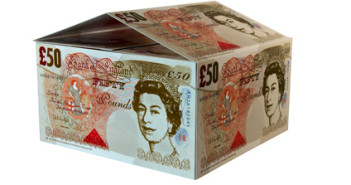The pound traded to five-and-a-half-year highs vs. the USD this week. The positive GBP news flowed early on in the week: the giant US pharmaceutical firm Pfizer confirmed its interest in a takeover bid for the British firm AstraZeneca, the deal said to be worth more than $100 billion. GBP/USD traded up through 1.6855 on the news.
It then snapped back towards 1.68 after UK q/q GDP printed below market expectations at 0.8%. There was hope in the run-up to the release that the number would be a good one, especially so following the run of other positive UK economic data of late. 1.68 has been providing solid support in cable over the last few weeks and it continued to find support here, as the data only just missed expectations by 0.1% and there was still a plethora of important news releases due from the US, including US GDP and the FOMC statement.
By Alex Edwards at UKForex, an international money transfer service
First quarter US GDP printed at 0.1% vs. expectations for 1.2% and 2.6% in the prior quarter. It missed by a huge margin, the bad winter weather being the biggest culprit. In result, the USD dropped across the board – GBP/USD rallied to a high of 1.69. The good US ADP employment report and the positive Chicago PMI, released either side of the US GDP data, were largely shrugged off as investors keenly awaited the FOMC Statement. This didn’t surprise – the Fed announced that it was cutting its asset buying program by another $10 billion and said that further reductions in measured steps were likely. The Fed also contradicted the GDP data somewhat by asserting that the economy had picked up and that consumer spending was rising. They also reaffirmed that interest rates would remain low for a ‘considerable time’ following the end to QE. The USD recaptured some of its earlier losses as a result and GBP/USD fell back to 1.6867.
GBP/USD then pushed higher again on Thursday, up through 1.69 following the release of strong UK manufacturing data, with the index for April coming in at 57.3 vs. expectations for 55.4. With this and other positive UK data releases of late, it’s becoming more and more likely that the Bank of England will hike interest rates early next year.
Investors are now gearing up for the much anticipated US non-farm payrolls data due for release this afternoon (Friday). The market is looking for US employers to have added 216,000 jobs in April, a substantial number, and it therefore means there are some more downside risks for the USD, especially so following the release of disappointing US GDP data earlier in the week. If the jobs number does come in soft, it might also mean we see a move on 1.70 in GBP/USD before the week is out.
Meanwhile, the euro has been steady. It lost a bit of ground earlier in the week following the release of weak German inflation data. Eurozone Flash CPI came in at 0.7% vs. expectations for 0.8%  on Wednesday, and even though it did miss forecasts, the damage wasn’t as bad as many were expecting (after the soft German data earlier in the week) and EUR/USD promptly rallied. The data has foiled market expectations for the ECB to ease anytime soon.
In this respect, the focus next week will be firmly on the ECB interest rate announcement and accompanying statement. Markets will be looking for any signs that the central bank is about to act to stave off the threat of deflation, whether it be through interest rate cuts or asset buying. The Bank of England also make their monetary policy announcement, although that’s more of a forgone conclusion with rates and QE widely expected to remain unchanged.
See how to trade the Non-Farm Payrolls with EUR/USD.



